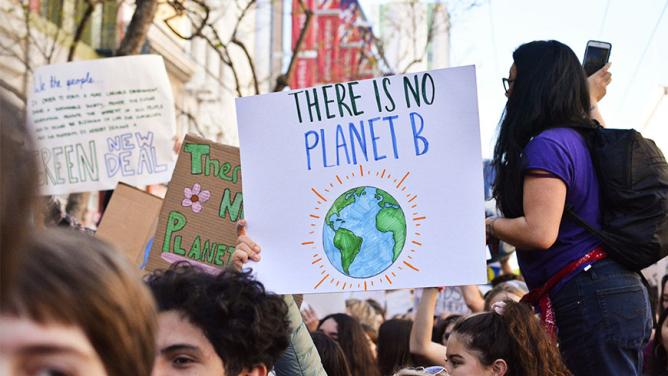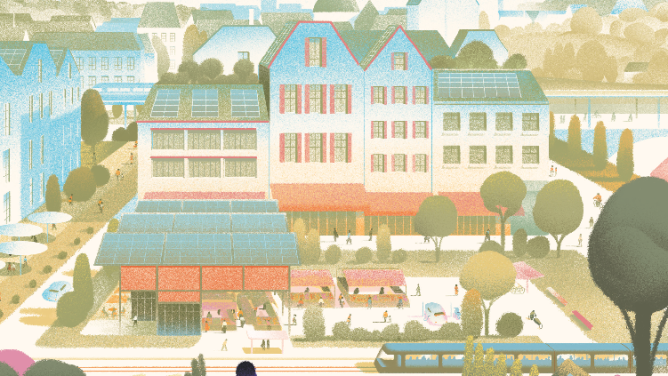The complexities of tourist congestion
The idea of overtourism has been all over the media since 2016, when Skift coined this term which has since taken on an unexpected dimension. The concept fits quite naturally into a context of exponential growth in the number of tourists on a global scale: in 1950, there were 50 million international tourist arrivals, which rose to 1.3 billion in 2017 – a figure which is still rising. These spectacular numbers of people travelling revealed new types of specific congestion (both urban and rural), due to the centripetal force of relatively localised tourist attraction areas. What’s more, it’s putting a lot strain on the property market and posing a significant environmental threat. That said, the myth that overtourism is simply a question of volumes should be qualified. The World Tourism Organization (UNWTO) outlines that this is above all a matter of planning, regulations and infrastructure. Tourism is sometimes used as a scapegoat for overall failing infrastructure used by locals and visitors alike. Take the Ile d’Aix in France, where the influx of tourists is battling against an antiquated water network, a port where it’s difficult to ensure safety, and the need for road maintenance on the island’s worn-out roads.
Adapted urban planning
In this context, the question of overtourism (and tourism in general) must be looked at from an urban planning angle. The UNWTO recommendations look like basic rules for good urban planning. It includes traffic management, quality signage, public transport accessibility, the development of cycle paths, the importance of “walkability,” and having cleaning and waste treatment services to size. Apart from these essentials, some cities are implementing their own specific solutions. For example, Barcelona has developed data-driven “micromanagement” strategies to limit the number of souvenir shops that may open in certain areas, or to establish specific car parking rules depending on the location. Meanwhile in Amsterdam, the Tourism in Balance programme aims to ensure that policies implemented put the needs of long-term, local residents before those of tourists.
Operation tourism dispersal
Whatever the destination, one of the main objectives is to disperse tourists. These days, holiday destinations are increasingly influenced by Instagram (and other social media), creating a herd-like effect. If tourism was spread more evenly, balancing both the positive effects and limiting the negative externalities would be much more feasible. Today, some serious marketing and “nudges” are being used to encourage visitors to think outside the box. In Ireland, the aim behind the Ancient Destination Experience Development Plan is to “help visitors leave the traditional tourist route.” For example, an app detailing hiking trails coupled with historical augmented reality has been developed for this purpose. In this context, the issue of infrastructure sometimes acts as a barrier: in wanting to distribute tourists throughout the country, the risk lies in redirecting them to poorly equipped sectors, and thus degrading the overall travel experience. But it can also be seen as an opportunity: a number of countries (such as Malaysia, EU member states and the United Arab Emirates) are looking to develop their healthcare infrastructure to attract the lucrative windfall of medical tourism.
Techno-solutionism and tourism
Digital tech is widely used in an effort to mitigate the impacts of overtourism. Location data coupled with AI can now be used to imagine unexpected solutions. In Italy, the Feel Florence app identifies the flow of tourists in real time and suggests routes to the user accordingly. Meanwhile, its Skip the Line feature redirects visitors to less-crowded attractions. In Amsterdam, visitors can download an app that can create personalised routes based on the user’s social media profiles.
A bit more of a futuristic option – and one that’s currently in the trough of the wave – is the use the metaverse to imagine new solutions to overtourism. Without falling into the fantasy of purely virtual tourism, VR applications can provide complementary solutions. Take Eternelle Notre-Dame, which is a historical immersive experience that enables the visitor to revisit 850 years of history. Meanwhile, the aim behind Coachellaverse is to enable the millions of people who can’t make it to the Californian festival to participate in their own way.
Government takeover?
Apart from case-by-case solutions, technical approaches and local adaptations, the question of managing visitor flow undoubtedly involves implementing stricter standards. In France, the plan to combat overtourism provides for the creation of a national observatory for major tourist sites, a marketing campaign to raise visitor awareness, and consideration towards off-season tourism, but which could also use taxation as a weapon to limit (and qualify…) the influx of visitors.
While lists of places not to visit are beginning to pop up (such as Fodor’s No List), local authorities, residents and tour operators have every interest in mitigating the effects of overtourism. It remains an economic issue because it’s a question of not killing the goose that lays the golden egg, but also an environmental and social one too, in order to guarantee that tourist areas remain liveable for local residents.


